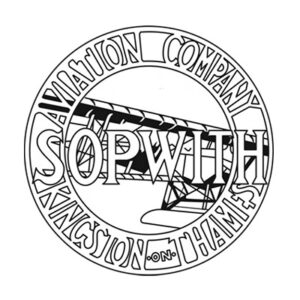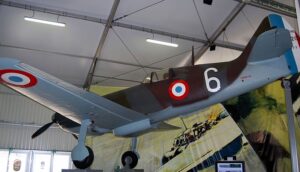Time Period: World War I
Country of Origin: United Kingdom
Type: Biplane, Fighter Aircraft
Manufacturer: Sopwith Aviation Company
Sopwith Camel Aircraft Overview
The Sopwith Dolphin was a British single-seat fighter aircraft that saw service in World War I. It was designed and built by the Sopwith Aviation Company and was notable for its unique “negative-stagger” wing arrangement and its advanced technology, including a synchronized machine gun and a hydraulic gear.
The Sopwith Dolphin was a single-engine biplane with a wooden structure and fabric covering. It was powered by a 260-horsepower Clerget 9B rotary engine and had a top speed of around 117 miles per hour (188 kilometers per hour). The aircraft was armed with two synchronized Vickers machine guns mounted on the fuselage, which fired through the propeller arc.
One of the most notable features of the Sopwith Dolphin was its “negative-stagger” wing arrangement, in which the upper wing was positioned forward of the lower wing. This design was intended to improve visibility for the pilot, and also gave the aircraft improved climb and dive performance. The Dolphin also featured a hydraulic landing gear, which was a significant improvement over the pneumatic or mechanical landing gear used on other aircraft of the time.
The Sopwith Dolphin first entered service with the Royal Flying Corps (RFC) in early 1918 and was used primarily as a fighter and ground attack aircraft. It was considered a successful design, with good performance and handling, and was generally well-liked by pilots. However, it was introduced too late in the war to have a significant impact on the outcome.
After the war, the Sopwith Dolphin was used by a number of air forces around the world, including the Royal Air Force and the United States Army Air Service. It was also used for civilian purposes, including mail delivery and aerial photography.
Overall, the Sopwith Dolphin was an important aircraft in the development of fighter aircraft technology, and its advanced features helped establish the importance of advanced engineering in aircraft design. Its unique wing arrangement and advanced landing gear made it a significant innovation in the field of aviation.
Sopwith Dolphin Specifications
- Crew: 1
- Length: 22 ft 3 in (6.78 m)
- Wingspan: 32 ft 6 in (9.91 m)
- Height: 8 ft 6 in (2.59 m)
- Wing area: 263 sq ft (24.4 m2)
- Empty weight: 1,400 lb (635 kg)
- Max takeoff weight: 1,990 lb (903 kg)
- Powerplant: 1 × Hispano-Suiza 8B V-8 water-cooled geared piston engine, 200 hp (150 kW)
- Propellers: 2-bladed fixed-pitch propeller.
Sopwith Dolphin Performance
- Maximum speed: 120.5 mph (193.9 km/h, 104.7 kn) at 13,000 ft (4,000 m). 116.5 mph (101 kn; 187 km/h) at 15,000 ft (4,572 m)
- Endurance: 2 hours
- Service ceiling: 21,000 ft (6,400 m)
- Time to altitude: 10,000 ft (3,048 m) in 16 minutes 30 seconds.
Sopwith Dolphin Armament
- Guns: 2× 0.303 in (7.7 mm) Vickers machine guns; up to 2× 0.303 in (7.7 mm) Lewis gun
- Bombs: Up to four 25 lb bombs.










